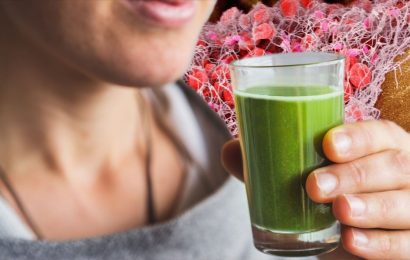Editor’s note: Find the latest COVID-19 news and guidance in Medscape’s Coronavirus Resource Center.
In early December, Sascha Schweiri noticed rapid at-home COVID tests in her local pharmacy. There were so many, she figured she could just come back to pick up a few later. By the time she did, her son had been deemed a close contact of a positive case at school, but tests were sold out. That night, her husband had symptoms.
“I called all the pharmacies around and no one had any,” says the mom of three from Easton, Massachusetts. “CVS online said one of my local stores had them, so I ran over. Nope, sold out. I called around some more. A CVS in the next town over said they had just been notified a CVS in Rhode Island had some. I had just enough time to drive there as fast as I could, 45 minutes each way, buy the two-box limit, and fly back to pick up my youngest at school.”
Schweiri’s story is far from unusual. Thanks to the Omicron surge, finding a rapid at-home test can feel like striking gold under a four-leaf clover at the end of the rainbow.
The Test Shortage
With many schools and offices requiring a negative test before you’re allowed in, just finding a test has become a major challenge. Two main types are in use for COVID-19. Molecular PCR tests, which must be evaluated in a lab, are more sensitive and will detect COVID sooner. With Omicron spreading so rapidly, you might wait in line for hours to get a PCR test and, because the labs that process the samples are also backed up, wait a week or more for results. Antigen tests, which return results in minutes, can be done at home — but they may give you a false negative result until the virus has reached a certain threshold.
“There are still supply chain issues, and issues with clinical labs being able to keep up with PCR testing,” says Amy Karger, MD, chair of the College of American Pathologists’ Point of Care Testing Committee. “Here in Minnesota, we don’t have enough people to do the collections, either.”
That holds true elsewhere. For instance, in the New York metropolitan area, urgent-care chain CityMD has temporarily closed dozens of locations due to staffing issues.
All of which means that for many people, rapid at-home tests seem like the better option — if they could find them. The website NowInStock.net, which tracks the supply of popular items, shows tests going in and out of stock at places like Walmart.com and Walgreens.com in as little as 6 minutes.
“Three months ago, if you wanted antigen tests, you could’ve gone to any CVS to get as many as you wanted,” says Omai Garner, PhD, director of clinical microbiology for UCLA Health. “Now I can’t find one in all of LA.”
Why Are Tests So Hard to Find?
In some European countries, at-home antigen tests are as easy to get as milk. Here, though, we’re facing two main problems.
First, “there are a lot more regulatory hoops to jump through in the United States than in other countries,” says Karger.
While the FDA recently introduced a faster review process aimed at tests that can be produced in large numbers quickly, only 13 over-the-counter antigen tests are now authorized for use in the US.
And second, the federal government has taken a hands-off approach to test production. “We needed federal support months ago for manufacturing and production of these tests,” Karger says. “That’s being done in European countries, which provide them free. Here it was left to the whims of companies to decide.”
The problem with leaving it up to profit-driven companies, Garner points out, is that COVID is cyclical, with unpredictable lulls and surges.
“It’s hard for a manufacturer to produce enough tests necessary for a surge in the middle of a time when we’re not surging,” he says.
For example, Abbott Labs, maker of BinaxNOW, shut down a factory and laid off workers after a drop in demand this past spring. As of September 2021, fewer than 50 million tests were being made each month by all manufacturers combined. That monthly number is over 200 million now — but with a US population of 330 million, it still translates into less than one test per person per month. And most of us will need to take multiple at-home tests after each exposure.
“With Omicron, you go from negative to positive quickly,” says Blythe Adamson, PhD, an infectious disease epidemiologist and economist. She works with companies to develop safe testing protocols for reopening and remaining open. “Delta took around 4 days. Now I’m seeing people become infectious 12 to 24 hours after being exposed. You have to be able to detect it that quickly.”
That means, ideally, testing daily after exposure.
The Cost of At-Home Testing
Since the start of the pandemic, lab-based tests have been free. But because the at-home tests are made and sold in the private sector, people must pay out of pocket. In September, the Biden administration announced an agreement with several major retailers to sell testing kits at cost — but the agreement expired in December, and prices have gone up.
For many people, even if they can find a home test, buying enough to test their families has become too expensive.
“If our family of three tested daily (which would be the current reality if we tested every time there was a close contact), it would be $16,425 for the year,” says Bethany Gladhill of St. Paul, Minnesota. “This is more than we pay for our health insurance or our mortgage.”
Help is on the way, though not as quickly or thoroughly as experts would like. The Biden administration says that as early as next week, a website to request free tests from the federal government will go live. The Washington Post reported that the US Postal Service could begin to deliver 500 million of these tests to American households in mid-January.
“Five hundred million sounds like a lot, but it really isn’t,” says Karger. “In an ideal world, every household would have enough to test on a regular basis, an abundant amount to test multiple days in a row. I’m hoping this effort will be followed by additional support to make it bigger than 500 million.”
In addition, as of January 15, the federal government will require health insurance companies to reimburse customers for the cost of at-home tests. But even that requires the consumer to request reimbursement first. And some insurance companies require you to physically mail in reimbursement forms and receipts.
Those without private insurance will be able to get free tests at more than 20,000 federally supported testing sites as well as community health centers and rural clinics.
The Accuracy Problem
If you’re lucky enough to find an at-home testing kit, but it’s too soon after exposure to the Omicron variant, you may not be able to trust a negative result.
Garner’s own family recently experienced this.
“Day 1, day 2 of symptoms, we had false negative antigen tests. We were symptomatic — mild runny nose, nasal congestion,” he says. “And then on day 3, I managed to get a PCR test, that was positive. I was also antigen-positive that day.”
Adamson was the lead author on a new preprint study (which hasn’t undergone peer review) that appears to confirm the problem. The study analyzed results from 30 people with the Omicron variant who had PCR and rapid tests done at the same time.
“We knew PCR tests turn positive before antigen tests, but most people had been assuming that a negative antigen test meant you weren’t infectious,” she says. “This study found that most people were contagious while they were testing negative by antigen.”
Researchers were able to confirm multiple cases of transmission happening before a positive antigen test.
“The point we’re at is that if a person is symptomatic day 1 and an antigen test is negative, you can’t trust that result. You have to continue to isolate, run another test on day 3 or 4. Or preferably, get a PCR, but they’re so hard to come by,” says Garner. On the other hand, “if an antigen test is positive, it’s accurate.”
One explanation for this new development may be that the Omicron variant appears to replicate faster in the throat than in the nose. Another recent preprint study found that saliva swabs produced more accurate results than nasal swabs.
“On social media, people are saying to swab your throat, then your nose,” says Karger. “The challenge is, no home tests are approved for throat swabs, there are no instructions for throat swabs. It’s kind of a rogue way to do it, but it seems like it may be the way things will go.”
What to Do Right Now
If you’re on the hunt for at-home tests, here’s what you can do:
-
If you see a test, don’t worry about which brand it is. Buy it. Any test you’ll find for sale in the US has received an emergency use authorization from the FDA. “Don’t hem and haw too much about brands now, given how few tests there are,” says Karger. But, if you have a choice, some tests are easier to use than others. The consumer safety organization ECRI recently published a report showing which rapid tests are most consumer friendly.
-
Shopping services like NowInStock.net, ZooLert.com, and HotStock.io monitor numerous websites and provide to-the-minute information about what tests are available.
-
On Twitter, SupplyNinja and Wario64, two accounts known for helping gamers find the latest PlayStation, have taken to tweeting about rapid tests.
-
For the first few days after exposure to Omicron, antigen tests may not detect the virus. Even if you have a negative result, experts recommend you assume you’re positive, especially if you’re having symptoms of COVID. If you’re able to get a PCR test right away, great. But if not, wait and repeat the antigen test 2 or 3 days later. “If both tests are negative, that gives you confidence you truly are negative,” says Karger.
-
If you only have a single antigen test available, wait to test until day 5 after exposure, Karger recommends. That should provide enough time for the virus to build up to levels you can detect.
-
If you test positive via antigen or PCR, the CDC recommends isolating for 5 days and wearing a well-fitted mask if you’re around others at home.
Source: Read Full Article


